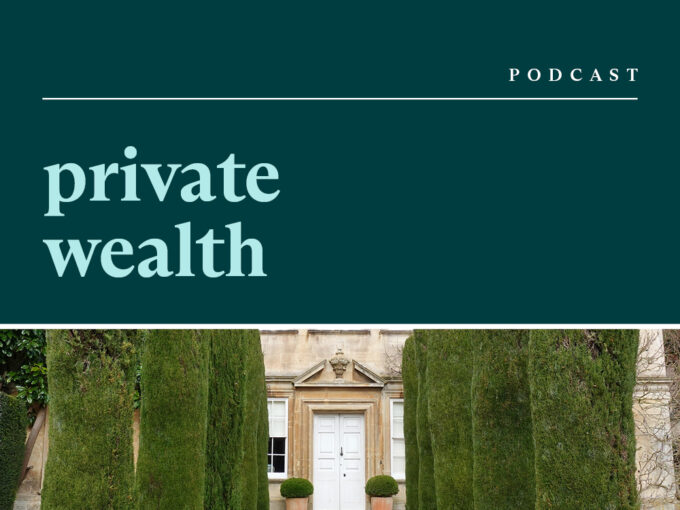With a number of tax reliefs available to the owners of heritage property – both land and chattels – we consider how taxpayers could benefit from the options available.
Heritage property tax reliefs can sometimes be regarded as the poor relation of Agricultural Property Relief (APR) and Business Property Relief (BPR). The standard advice was to claim BPR, with the conditional exemption as a fallback if that failed.
However, with the upcoming changes to APR and BPR, restricting tax relief to 50% for values over £1 million, now may be the time for heritage property reliefs to rise.
Types of tax relief
There are a number of tax reliefs available to the owners of heritage property:
- Conditional exemption: The conditional exemption provides a deferral of inheritance tax (IHT), and may have been used to defer estate duty or capital transfer tax in the past. In our 2024 succession survey report, we discovered that almost a third of estate owners surveyed are unaware of conditional exemption from IHT.
- An acceptance in lieu: This is used to pay IHT and offers a credit (the ‘douceur’) with respect to capital taxes (IHT, estate duty, capital transfer tax and capital gains tax (CGT)) that would otherwise be due on the disposal.
- Heritage Maintenance Funds (HMFs): This enables the owners of heritage property to shelter non-heritage funds from IHT on the basis that they are being used to maintain the heritage property.
- Cultural Gifts Scheme: This scheme provides income tax and CGT relief on the gift of property to the nation.
Each tax relief is described in more detail below, but first we must establish what heritage property is.
National Heritage Property
National Heritage Property is defined under IHTA 1984 s31(1) as:
(a) A chattel which is pre-eminent for its national, scientific, historic or artistic interest.
(aa) Collections within (a) which as a whole appear to be pre-eminent.
(b) Land of outstanding scenic, historic or scientific interest.
(c) A building which should be preserved due to its outstanding historic or architectural interest.
(d) Land essential for the character/amenity of a building in (c).
(e) Any object historically associated with a building in (c).
HMRC, in consultation with relevant advisory bodies, such as Arts Council England and Natural England, will determine whether something meets the pre-eminent or outstanding tests.
When considering chattels under (a) or (aa), HMRC will take into account any significant connection with a particular place.
Conditional exemption
Conditional exemption is available on chargeable transfers during lifetime and on death. Note that a Potentially Exempt Transfer (PET) is not a chargeable transfer unless the donor dies within seven years. Conditional exemption must be claimed. If the claim is successful, no IHT is payable.
The conditions are:
- If the item is a chattel, it remains in the UK (unless HMRC approve it leaving the UK temporarily, eg for an exhibition abroad).
- The owner must take all reasonable steps to preserve the item.
- The item must be made accessible to the public, and this must be publicised.
It’s possible for a conditionally exempted item to be transferred to a new owner, and for that transfer again to be conditionally exempt, providing the new owner takes on the conditions.
Public access conditions
From 31 July 1998, public access cannot be by appointment only, so the item must be viewable at advertised times by anyone who visits. The owner can charge a “reasonable” fee for access. There are also provisions in FA 1998 to enable pre-1998 undertakings to be varied to include public access without prior appointment.
The precise access conditions are agreed with HMRC, but typically will be at least one month a year, as well as offering viewings by appointment. The conditions will vary depending on the nature of the item, with particularly fragile items being permitted reduced opening times.
Example
On the death of his Aunt Mabel, James inherited a plot of land that was valued at £10,000.
Mabel’s personal representatives apply to HMRC for conditional exemption.
HMRC consults with Natural England, and it’s agreed that the land is of outstanding scientific interest due to the rare species living there. Accordingly, conditional exemption is granted on the understanding that James will maintain the land in its current state. James must open the land to the public for one month each year, together with permitting visits by private appointment.
No IHT is therefore payable on the land’s value of £10,000 on Mabel’s death.
What happens if any conditions are breached?
If the item is sold, or the undertakings are breached, IHT becomes payable, based on the current value of the item. CGT will also be payable if the asset is being disposed of at a gain as normal. Under TCGA 1992 s258(8), any CGT is deducted from the current value before calculating the IHT charge.
Example
James markets the site and it becomes a popular tourist attraction (walkways are constructed so that visitors do not disturb the rare species). Over 25 years later, it has become highly profitable. He is offered £200,000 for the site and decides to sell.
IHT therefore becomes payable on the site’s current value. There is also a CGT charge based on the gain. James is a higher rate taxpayer.
If there have been multiple transfers that have been conditionally exempted, only one will become chargeable. HMRC may choose any transfer within the last 30 years before the breach: if there has been both a chargeable lifetime transfer and a transfer on death, they will obviously choose the latter in order to collect tax at 40%, rather than 20%.
If there have been no transfers within the last 30 years, HMRC will tax the most recent transfer.
If there have been no transfers within the last 30 years, and the most recent transfer was a transfer on death, the taxpayer might therefore choose to make a chargeable lifetime transfer (likely to a trust set up for that purpose), to create a transfer within the last 30 years on which IHT would have been payable at 20%. On breach, HMRC will be obliged to charge IHT at 20% rather than 40%. Similarly, if the most recent conditionally exempt transfer was a transfer on death almost 30 years ago, it may be prudent to make a conditionally exempt chargeable lifetime transfer, and then wait until the death transfer falls off the 30-year clock before breaching.
Example
James decides to wait five years, and transfers the land into a trust, claiming conditional exemption. As part of the conditional exemption claim, the trustees agree to meet the same conditions as James had previously. No gain arises under TCGA 1992 s258(3) and (4).
It’s assumed James has no nil rate band available.
The trustees then sell to the same buyer, who is still willing to pay £200,000. Their tax charge is as follows.
Acceptance in lieu
An individual may offer a heritage item in lieu of IHT (or estate duty/capital transfer tax, if they have items previously conditionally exempted under these regimes and are now breaching the conditions).
The individual is offered a credit against tax payable on other items, based on the net value they would have received for the heritage item if they had simply sold it and paid the tax, plus a ‘douceur’ which is calculated as 25% of the tax that would have been payable if the item is a chattel, or 10% of the tax due if the item is land. The person offering the item in lieu must also be the person liable for the IHT. Any acceptance in lieu credit in excess of the IHT due is wasted.
Example
James’s aunt passes away and names James as her executor. Rather than sell the land, James instead offers it in lieu in part satisfaction of the IHT due on his aunt’s death, as he owns the land and is liable for the IHT. HMRC accepts his offer.
The tax credit James will get is as follows:
Note that if the IHT liability on James’s aunt’s death is lower than £103,765, James will not receive a refund.
This is lower than if James used the trust structure, so he would likely only do this if he was not approaching the 30-year mark.
Private treaty sale to Schedule 3 body
If a conditionally exempt asset is sold to a body listed in IHTA 1984 Schedule 3 (broadly these are various national galleries, and any government or local body), the conditional exemption charge does not ripen, and nor is there any CGT due as a result of TCGA 1992 s258(2)(a). HMRC guidance is that the price offered by the Schedule 3 body should broadly be in line with the special price calculated if the property was offered in lieu, although there is room for negotiation.
If the owner of a previously conditionally exempt asset is looking to sell, it may be more cost-effective for them to sell to a Schedule 3 body for a lower price than offered by another third party, as the tax relief may more than compensate for the difference.
Example
James is offered £105,000 by the Swindon Museum, which is an offshoot of Swindon Borough Council.
Accordingly, it’s treated as a Schedule 3 body. Although this is lower than the £200,000 offered above, after deducting the CGT and IHT due, James would only be left with £93,072 if he sold to the third party. Therefore, he is better off selling to the Swindon Museum for £105,000.
Heritage Maintenance Funds (HMFs)
HMFs are trusts used to maintain property that is eligible for conditional exemption (note that the property does not have to actually be conditionally exempted; it must merely qualify as such).
HMFs are exempt from IHT, unless capital is subsequently paid out other than for the maintenance of heritage property. There are therefore no relevant property charges (no IHT entry charges, 10-year charges, and no exit charges if capital is used to maintain the property), and the assets are not in anyone’s estate for IHT purposes.
How can a trust qualify as an HMF?
There are various conditions that must be satisfied for a trust to qualify as an HMF:
- Any assets added must be appropriate (ie income-producing), and not excessive for the purpose. There must be a minimum of £10,000 settled.
- Income must be used to maintain the heritage property, or paid to an approved body.
- At least one trustee must be a professional trustee/trust corporation.
- The fund must be used to benefit the heritage property for at least six years.
If an HMF is not settlor-interested, (if the settlor is dead the trust cannot be settlor-interested) any income paid out is taxable as grant income in the hands of the recipient, ie the owner of the heritage property in question. There is therefore a double tax charge, as the HMF will have paid tax already on its income.
The standard approach in a situation like this is to terminate the HMF and pay all the capital to the current owner of the heritage property, who then resettles it on a new HMF within 30 days. This creates a new settlor-interested HMF, and assuming this happens within 30 days, there is no IHT charge. Any residual income in the HMF is taxable – this can be paid out on repairs to the heritage property, although this will be treated as grant income; it may be there are enough expenses within the trading business to offset these.
What can HMFs be used for?
HMFs have not proved terribly popular, but two common uses are:
- To test whether certain property will qualify for conditional exemption (HMRC will only approve the creation of the HMF if they consider the property will qualify). There will be costs associated with creating an HMF, so the taxpayer will need to weigh these up against the desire to know if something qualifies.
- To exempt certain outlying properties of a landed estate, eg farm cottages that might not themselves qualify for conditional exemption, although the main estate does. With the changes to APR and BPR, their use may therefore increase.
Cultural Gifts Scheme
This scheme is available to individuals and companies, but not personal representatives (ie deceased estates) or trustees.
If an individual donates a pre-eminent object or objects to the nation, they receive tax relief of 30% of the value of the object(s). This relief can be set against the individual’s income tax/CGT liability for the year in which the donation is made, and/or any or all of the following four tax years. The amount of relief to be claimed for each year must be specified at the time of the donation and cannot be subsequently varied. Relief will be deducted against the individual’s income tax liability first, followed by their CGT liability. The relief will only reduce their tax liability to nil and cannot create a refund (although the taxpayer may be able to claim a refund with respect to tax paid at source).
Example
James decides to donate an object he inherited to the nation.
The object is worth £300,000, and James will therefore receive relief of up to £90,000, which he can allocate between the current and next four tax years as he chooses.
James is now unemployed and plans to go travelling for a year before seeking new employment. He expects his future salary to increase, and therefore allocates the relief as follows:
How we can help
This is a complex area, so you should always seek professional advice before taking any action.
Our heritage team support many of the UK’s historic houses, stately homes, castles, and gardens with a variety of specialist services. For further information on the topics discussed, please get in touch with Will Leonard.
Contact Us
Director, London
Key experience










